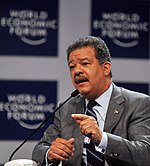League of Oil Producing States: Difference between revisions
No edit summary |
No edit summary |
||
| Line 6: | Line 6: | ||
| symbol_width = 175px | | symbol_width = 175px | ||
| image_map = LOPS map.png | | image_map = LOPS map.png | ||
| map_width = | | map_width = 250px | ||
| org_type = {{wp|Intergovernmental organisation}} | | org_type = {{wp|Intergovernmental organisation}} | ||
| membership_type = Membership | | membership_type = Membership | ||
Revision as of 13:53, 18 January 2020
This article is incomplete because it is pending further input from participants, or it is a work-in-progress by one author. Please comment on this article's talk page to share your input, comments and questions. Note: To contribute to this article, you may need to seek help from the author(s) of this page. |
League of Oil Producing States Ligue des états producteurs de pétrole | |
|---|---|
|
Flag | |
 | |
| Headquarters | Garrafrauns, Caldia |
| Official language | Gaullican |
| Type | Intergovernmental organisation |
| Leaders | |
• Director | |
| Establishment | |
• Statute | September 1976 |
• In effect | January 1978 |
Website www.LOPS.org | |
The League of Oil Producing States, often abbreviated to the LOPS, is an intergovernmental organisation of 16 nations, founded to promote the sharing of technology and extraction techniques between the oil producing nations of the world. It was established on 12 September 1976 by its original members in and since 1978 has been headquartered in Garrafrauns, Caldia. Physical disruptions to the international oil market caused by the 1975 Irvadistan War led other major oil producers to cooperate in order to minimize the impact of the war. Its mission has since evolved to assist nations in developing their oil industries. The organization is also dedicated to serving as an information source for statistics surrounding the international oil market and related industries.
The LOPS acts as a policy advisory to its members, but also advises non-member countries that important significant quantities of oil and gas. Today, it is primarily focused on the "3Es" of energy policy: export, energy security, and economic development. The organization has been criticized for working to advance the petroleum industry as global emissions have resulted in climate change. LOPS advisers have at times tried to work against the promotion of renewable energy sources.
Member states
| Nation | Membership years | Population | Production (bbl/day) |
Production region |
|---|---|---|---|---|
| 171,998,206 | 13,555,147 | Solarian Sea | ||
| 1976– | 39,689,032 | 8,000,000 | Haillet's Sea | |
| 56,877,657 | 4,248,710 | Solarian Sea | ||
| 1976– | 51,690,103 | 3,623,879 | Sublustrian Sea | |
| 1985– | 553,746,000 | 2,456,076 | ||
| 1976– | 77,895,231 | 2,276,967 | Vehemens Ocean | |
| 1982– | 88,081,653 | 2,000,000 | Haillet's Sea | |
| 1976– | 9,257,180 | 1,647,975 | North Sea | |
| 47,982,681 | 1,420,600 | Banfura Sea | ||
| 26,427,082 | 1,229,357 | |||
| 1976– | 7,538,726 | 939,760 | North Sea | |
| 1976– | 20,238,000 | 490,000 | ||
| LOPS Total | – | 1,151,421,551 | 41,888,471 | – |
Current LOPS leaders
- PM Abiy Ahmed Ali (crop).jpg








